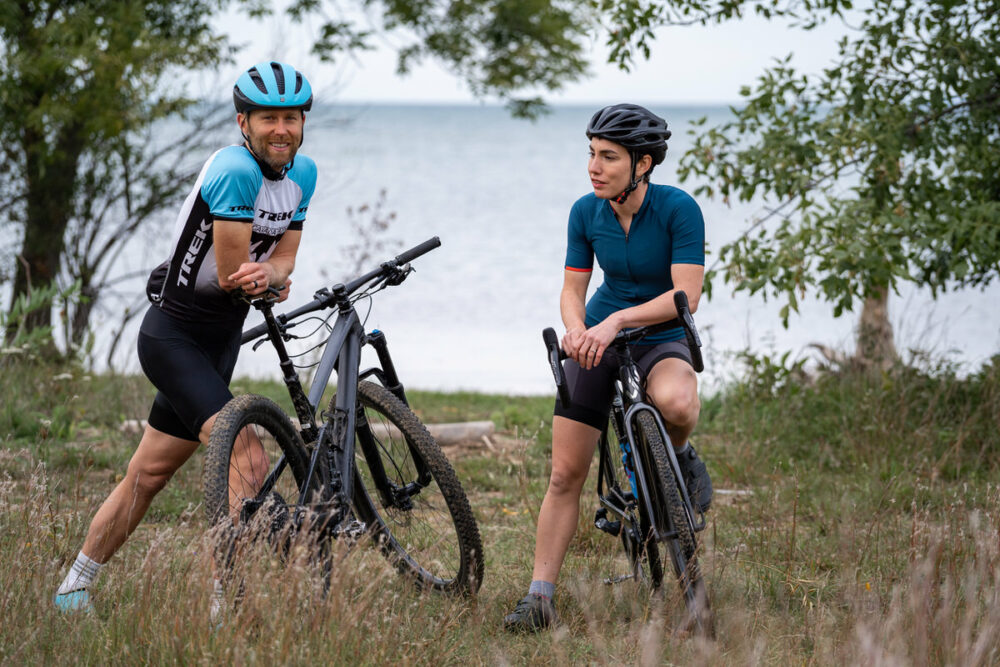Knowing why you cross-train helps you motivate learning new activities, not doing your favorite sport every day, and maybe even going out in the cold! But it is worth it – find out why in this episode and be sure to check out the full post below!
Our Book is Out! Becoming a Consummate Athlete https://amzn.to/36B1Wat
Support the Show:
Episode links to your favorite podcast player, mp3 download, embed
We are obviously big believers in the power of cross-training. Our bias is that most of our clients and our community here at Consummate Athlete are adult endurance athletes with busy lives. That said even Olympic caliber athletes in many sports (if not all sports) will spend 20-50% of their time NOT in their goal sport due to weather, injury, access to facilities or to optimize their fitness.
Many coaches are not big believers in cross-training, usually, the argument is around specificity and quotes like ‘runners run’. I get it and agree but, at least in my experience, we risk long-term benefits and consistency and injury by not cross-training.
The Argument in Short: Cross-training keeps you motivated, avoid or rehab an injury, can help increase your total training time/load/capacity, and help you thrive in poor weather.
The WHY for Cross-Train Expanded:
1. Weather – I am from Canada so the weather is about 80% of my daily conversation. Having come from elite MTB training I will tell you it’s pretty damn important to do something else other than stare at a wall (or a screen) and pedal a bike on the trainer. As I am fond of saying, it’s the batting cage … it’s not baseball. Like-wise, for runners, we can argue the treadmill is not exactly like running outdoors, especially for a trail runner. The idea then is we can cross-train and have more fun, perhaps illicit other beneficial training adaptations, and, in many cases, avoid overuse injury by having phases of training with less ‘goal-sport’ time. Being able to run as a cyclist lets you keep training in poor weather when cycling might be really crummy (or even dangerous!)
2. Time Availability – Busy adult athletes have about 8 hours to train. But if they have a gym at work and fit in 3-5 strength or short cardio workouts during lunch-hours would you bet on the 8-hour cyclist or the 8-hour cyclist who is in the gym most days at lunch? You could insert running as some of those lunch workouts.
3. Avoid Overuse-injury – A runner might ride a bike on two days a week or use the bike on a day or two a week that you might take off completely so their training load is higher with a much lower chance of overuse injury from running more. Mountain bikers who ride on the road bike might see a similar variation in loading and avoid too much offroad time that might stress the back, knees, or upper body more than they can handle. Having a few sports you can rotate through lets you adjust for different ‘niggles’ you might feel but keep your fitness stable or progressing.
4. Avoid Burn-out – This is basically the same as above but deserves its own section since it’s easy to overlook that success means doing something for a long time. If you can mix up your routine and provide yourself some options and avoid really crummy (or dangerous) weather you might stick with a sport longer. So it’s like pacing your enthusiasm for training for a sport by doing some other stuff.
5. Rehab an Injury – Most runners get injured (this is cliche but true …) but what if you had access to some swimming or water running and your bike and maybe some nordic walking with poles. You could see how your training load (e.g. fitness) might be fairly stable or at least any declines are minimized.
6. Built-in Peak – This is a neat common-sense idea that I think is easy to miss. You cross-train in your base/general preparation when your important races are further away. This added cross-train time helps you train more. Then as you get more specific and want to do more race-specific training (e.g. more intensity, less volume) you do LESS cross-training and get all specific and do all your important ‘GAME-PLAY’ of gear, fueling, and pacing so that you rock your A-Race. So cross-training is like ‘easy’ periodization. More time away from races, and less as you approach races. this was inspired by High-performance training for sport – Joyce Book – High-Performance Training for Sports
7. Specific Adaptations – this can get kooky if we think about ‘central’ adaptations to the heart/lungs vs peripheral adaptations to the specific working muscles. Likely the most straight-forward is a weight-bearing movement for swimmers, cyclists. Including some running, walking, or strength training to help bone-mass or add muscle mass.
8. Community – meet more people when you do different sports. You might have gym friends, run friends, and volley-ball or yoga friends! *study on volleyball/stretching benefit longevity
9. Ego – no judging or basis for comparison when in a new sport. Embrace the beginner’s mindset and just move.
10. Efficiency – If you are in an unfamiliar sport you will not be as efficient, which is a great feature when trying to build work capacity (e.g. burn more calories). Running is often held up as an efficient workout due to the time required to get out the door and simply that it does not have the mechanical efficiency of the bicycle. Alex Hutchinson Outside Article on poles
Bonus #11 – Sampling – You might find you enjoy, or that you are more proficient in another sport. This isn’t just for kids. As we age, as we move to new locations and as our time available shifts the sports we prefer can change. So cross-training helps you find new sports to enjoy! *See Epstein’s Range here
Ideas if you find it hard to Cross-Train
We get it and we are here for you! You like to do your goal sport and you might have some injuries that prevent you from doing things like running and might not have access to great terrain for xc-skiing and other common modes.
Walking is a great thing to start with and is good for so many reasons (mobility, ability to do errands or talk on the phone, get outside, low-level cardio that is missing in many athletes, no special equipment, do it anywhere!) You can progress this with some stair repetitions, hills, added loads/bags as you gain capacity with walking.
Combine indoor Cycling with Strength – For those who train indoors on the bike is to jump off the bike and do some strength type movements every 5-20 minutes during your rides. This will mix up those long sessions on the bike and also help get more muscle mass working. For many clients, this can make the difference between 1-hour max indoor time to 90 or even 120-minute sessions.
Think outside of cardio – strength can be done anywhere and is very beneficial




